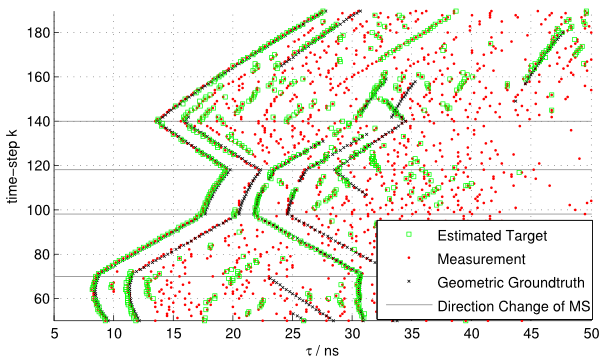Tracking of UWB Multipath Components Using Probability Hypothesis Density Filters
- Published
- Sat, Sep 01, 2012
- Tags
- rotm
- Contact

For indoor navigation and tracking using ultra wideband (UWB) radio signals, explicit use of the present multipath propagation can be made. Then, the multipath components (MPCs) need to be extracted from the measured channel impulse response (CIR). In this work we present a method to simultaneously estimate and track the number of MPCs present together with their individual state from measured CIR data using the Probability Hypothesis Density (PHD) multi-target filter.
It is shown that the PHD filter is capable of jointly estimating the number of MPCs together with their delays in a challenging indoor scattering scenario. Most of the diffuse scatter components and measurement noise is mitigated by the PHD filter, while most of the estimated MPCs can be matched to a geometrically determined groundtruth of first and second order specular reflections.
In the figure, the targets (the MPCs) estimated from the PHD-filter based on the input measurements are plotted. The measurements are obtained from the measured CIRs in each time-step k. Despite the high amount of diffuse scatterer and noise present in the measurements, the PHD-filter is able to extract most of the dominant multipath components compared to the geometric groundtruth.
More information can be found in our paper!
Browse the Results of the Month archive.
